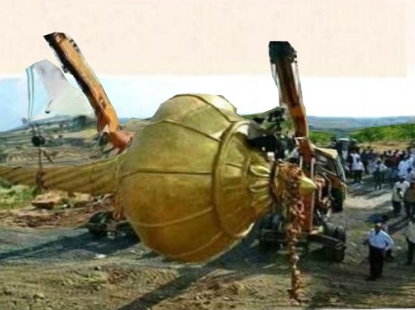Do You Know It’s Not True That a "Hanuman Gada" Was Found in Ram Setu
#RamSetu, #AdamBridge, #HanumanGada, #RamayanaMyth, #ASI, #ISRO, #AIHoax, #NaturalFormation, #FactCheck, #IndianHistory, #MythVsScience, #SpaceResearch, #Hanuman
KNOWLEDGE & EDUCATION
7/31/20252 min read


The recent claim that Hanuman’s gada (mace) or weapon was discovered at Ram Setu has been trending across social media and WhatsApp groups. But credible archaeological and scientific evidence clearly shows no such relic has ever been verified. Let’s explore what has been confirmed—and what belongs purely to myth and misinformation.
1. What Is Ram Setu (Adam’s Bridge)?
Ram Setu, also known as Adam’s Bridge, is a chain of natural limestone shoals stretching ~48 km between Rameswaram (India) and Mannar Island (Sri Lanka).
Geological studies suggest it is likely a natural coral-reef-based formation, possibly once a land connection during ancient sea-level changes.
2. Government Clarified: No Solid Proof It’s Man-Made
In Parliament, India's Space Minister stated there’s no conclusive evidence that Ram Setu is man-made.
Satellite images show limestone islands, but not remnants of an engineered bridge.
3. ISRO’s High-Precision Mapping Confirms Nature
Scientists from ISRO and NASA used satellite LiDAR (ICESat‑2) to map the submerged structure in detail.
Results show it’s mostly a natural ridge, with only ~0.02% exposed; no artifacts or tools found.
4. No Archaeological Evidence of Hanuman’s Gada
Despite popular belief, no archaeological survey or ASI excavation has found any mace, weapon, or object attributed to Hanuman around Ram Setu.
Claims about relic discoveries remain in legend or online rumor territory, not verified history or science.
5. AI-Generated Social Media Myths Compound Confusion
Recently, videos shared online claiming to show submerged ruins or divine relics have been proven AI-generated by fact‑checkers—not actual footage of any archaeological finds.
6. Myth vs. Scientific Evidence
In the Ramayana, Ram Setu is said to be built by Lord Rama’s Vanara army including Hanuman using floating stones and a mythic vajra (gada).
No scientific study corroborates this—most experts consider the epic as mythological in its construction aspects.
7. Why the Mounting Misinformation?
Popular movies, memes, and religious narratives amplify legend over science.
The culture of uploading AI-generated footage as proof adds to the confusion.
While respectful of faith, distinguishing myth from verified evidence is essential.
8. What Would It Take for Real Verification?
Systematic excavations by the Archaeological Survey of India (ASI)
Radiocarbon dating of found objects
Peer-reviewed publications showing any relics firmly linked to named figures
None of this exists in Ram Setu’s case to date
Conclusion
So far, no gada, no artifacts, and no proof of construction by Hanuman’s army have been validated by science or archaeology. While Ram Setu continues to inspire devotion, its reality stands firmly as a natural geological structure—not a battlefield or religious relic site.
Next time you see claims of “gada found in Ram Setu,” know it's part of mythology and myth-based media hype—not historical fact.
Knowledge
Empowering minds with reliable educational content daily.
Newsletter Signup
© 2025 DoYouKnow. All rights reserved.
Stay Ahead of the Trends – Join Our Newsletter
